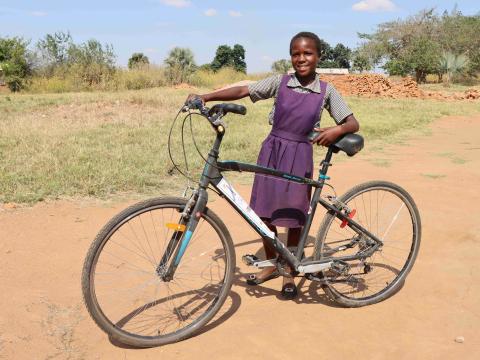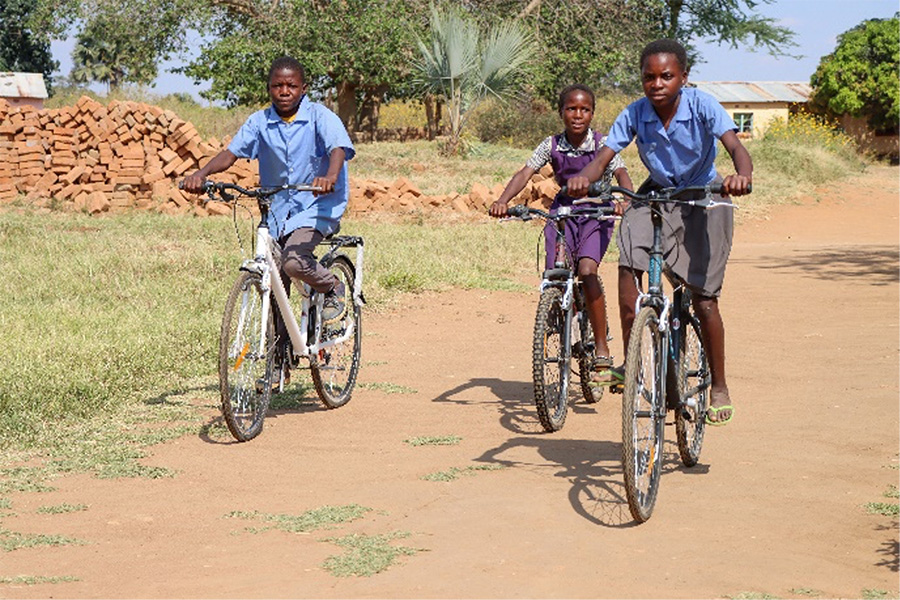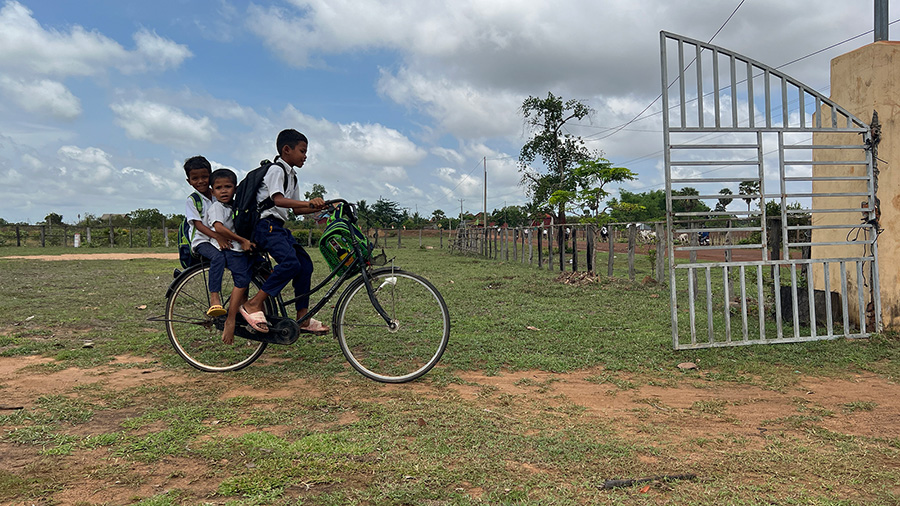Pedalling Towards Progress

Advances in technology on the order of digital applications, smart phones and even AI to name a few, must not, in every instance, be considered the be-all and end-all for the world’s most marginalised out of school children (OOSC). That is not to say, however, that education access should not include modern technologies, where feasible. Sometimes there can be a mad dash in pursuit of what is new and en vogue, and that which is known is set aside. That is why “World Bicycle Day” is an opportune moment for policymakers and education stakeholders across the globe to recall to memory the inherent virtues of and linkages between age-old technology in the form of the bicycle and sustainable development, especially as it pertains to SDG4.

The issue at hand centres on a firm possession of the pragmatism that can bring about the realisation of the fundamental right to education. Today, it is worth keeping in mind that all over the world, where there are rural populations, the distance from home to school may serve as the most formidable barrier to education; in some developing countries, a child’s average trek to school is 3-10 kilometres. That is not nothing – on a great many occasions, children have to skip breakfast in the hope of making it to school on time, often arriving fatigued, weary and late, which may compromise their performance, confidence and capacity to focus on learning, to say nothing of the return trip and obligations they may have to support their family after school. Simply stated, at the primary level, “the farther children are from school, the less likely they are to attend.” These are perhaps some of the main reasons, from Africa to Asia, Education Above All Foundation’s Educate A Child (EAC) programme partners with organisations, such as World Vision and Action Education, to increase access to quality primary education, which includes the ready distribution of bicycles to the hardest-to-reach children who have to travel great distances just to get to school.
“When you look at bicycles, they are so environmentally friendly, as well as cost effective. They are not an expensive mode of transport, which offers a lot of benefits to vulnerable populations,” asserts Mr Sydney Simubwa, Project Manager with World Vision Zambia. Regarding “accessibility,” he goes on to say that in a country where the average distance between schools is roughly 10 kilometres and there are no established roads in rural settings, “a bicycle is a powerful tool that can promote sustainable development...”

Commenting on the “added value” and expansive utility, particularly for children in rural locations, Mr Samphors Vorn, Country Director for Action Education in Cambodia posits that they “contribute a lot” and also mentions how the bicycle can engender friendship, mutual understanding between people, respect for the environment, as well as support sports, recreation and the livelihood of a household. To the latter point, Mr Vorn explains that, “In the morning, the children might go to school by using the bike, but in the afternoon, they might use it to help the family to collect crops… to at least contribute to the family’s income.”
Still, the benefits do not stop there. David Mumo, EAA Foundation Senior Education Specialist, points out that, “bicycles help young children, especially girls, travel to school safely without fear. They are protected against incidents of SGBV (sexual and gender-based violence) when they ride together in groups.”
However, it is sage advice to not overly romanticise the import of bicycles, for there are limits to what they can achieve in this context. Mr Simubwa draws attention to the fact that children, in rural areas who face the daunting task of walking several kilometres on a daily basis to and from school, may also have to contend with a range of other barriers along the way, citing poverty, climate change and drought, and food insecurity, particularly if their parents are subsistence farmers, which is often the case in Zambia. “It’s about learning about the child you are teaching,” he says plainly. Without question, interventions that take a comprehensive view of the child’s whole life into account are critical.
Not surprisingly, when asked about how the typical out of school and/or at-risk child in rural Cambodia and Zambia fared in the era of COVID-19 as education systems went online, Mr Vorn and Mr Simubwa both mention the devastating consequences of “learning loss” that occurred in their respective countries. Moreover, they spoke of already marginalised children being further disadvantaged by initiatives that made education purely digital. Apparently, not every parent everywhere had a smart phone or could afford stable internet access to help keep their children learning.
Interestingly, while considering the application of bicycles against the backdrop of AI, other technological strides and what this may portend for education and vulnerable children, both Mr Vorn and Mr Simubwa seem to call, within varying degrees of one another, for a measured approach. Though technological “integration” should be sought where it makes sense, striking “a balance between both access and quality” ought to be the guiding principle, especially when it comes to training effective teachers, “school reform”, “curriculum”, and “methodology”, according to Mr Vorn.
On the other hand, Mr Simubwa, while not entirely discounting the value of technology in terms of access and quality for Zambia’s hardest-to-reach children, maintains that, at this time, such grandiose steps are a bit “farfetched.” Rather, he would seek to emphasise the provision of “quality infrastructure”, “learning materials”, and the development of teacher capacity.
Ultimately, there is, of course, space for modern technologies in the classroom, but at the same time there is ample cause to avoid making them the panacea for access and quality shortfalls in the education sector. After all, studies show that “bypassing teachers” in favour of a strict reliance on technology does not produce better learning outcomes for students. Yet with respect to the global agenda for sustainable development and the positive, affirming role that SDG4 on quality education plays therein, the simplicity of the bicycle may just be beyond reproach.
This post is cross-posted on Education Above All's website Pedalling Towards Progress